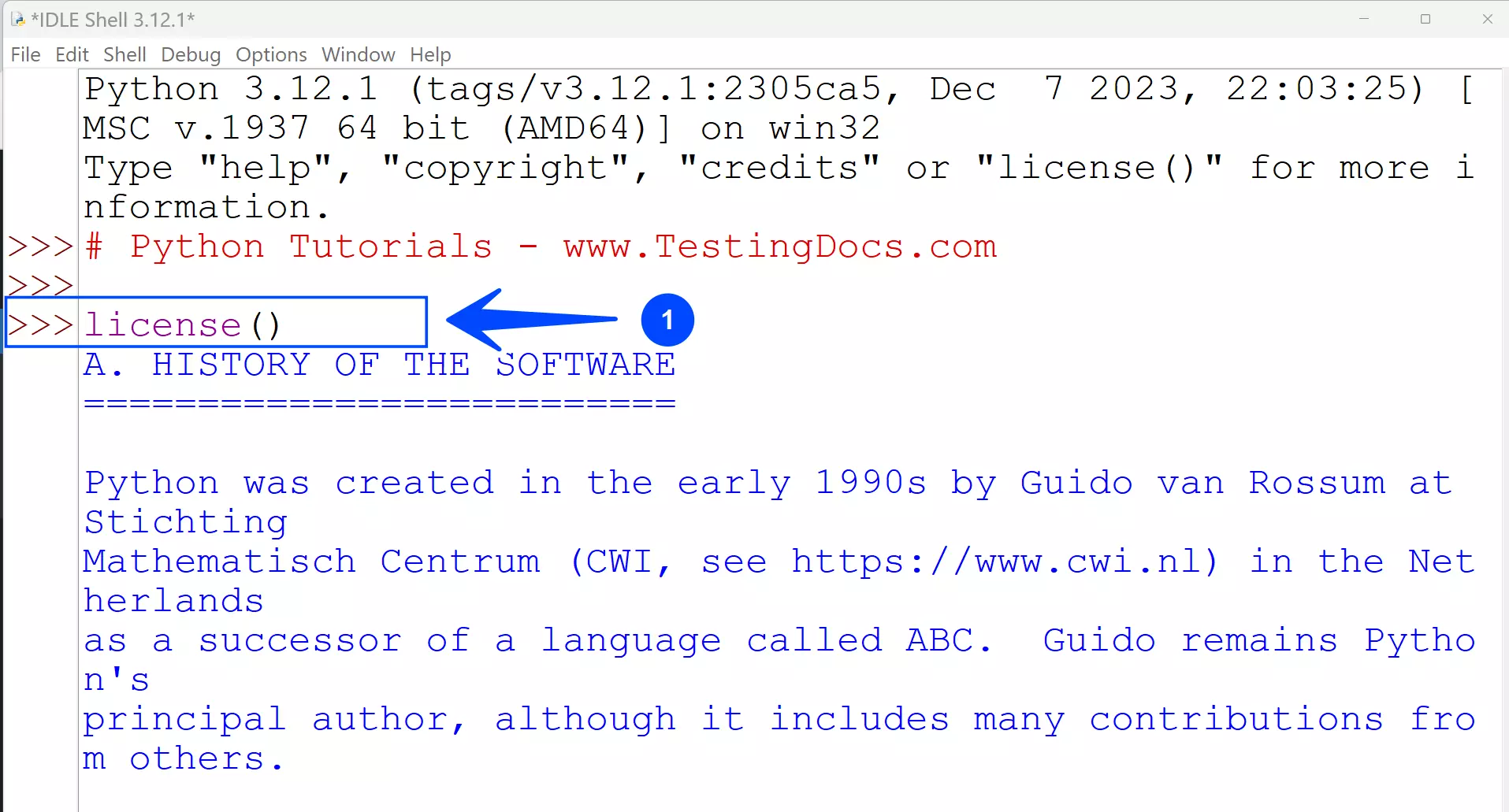Python History
Overview
In this tutorial, we will take a quick look at the history of the Python programming language. Python is a high-level, general-purpose programming language known for its readability and simplicity. It supports multiple programming paradigms, including procedural, object-oriented, and functional programming.
Python History
Python was developed in the early 1990s by Guido van Rossum at CWI in the Netherlands as a successor to a language called ABC. He published the first version of Python code in 1991. Guido is still the principal author of Python, but it also includes many contributions from others.
Python is the derivative of several programming languages, such as ABC, Modulo-3, C, C++, Algol-68, Smalltalk, etc. The ABC programming language is an interactive high-level programming language and environment for personal computing, initially designed by Leo Geurts, Lambert Meertens, and Steven Pemberton at CWI (Centrum Wiskunde & Informatica).
The ABC language was a terminated project at the CWI Research Institute, where Guido Van Rossum worked in the development of the Amoeba Distributed operating system.
| Python Version |
Year | Description |
| Python 1.0 | 1994 | Python 1.0 was the first official release of the Python programming language. It included core features like clean syntax, exception handling, functions, modules, and the basic data types (strings, lists, dictionaries, etc.) |
| Python 2.0 | 2000 | Python 2.0 added new features like Unicode support, Garbage Collection, List Comprehensions, Function Decorators, etc. Python 2.0 expanded its standard library with new modules and features, making it more versatile for various programming tasks. |
| Python 3.0 | 2008 | Python 3.0, also called “Py3k” or “Python 3000” introduced new syntax features, such as function annotations, print statement, extended unpacking, etc. Python 3.0 was intentionally not backward compatible with Python 2.x to allow for more significant changes in the language. |
To learn about the software’s history in detail, open the interactive Python prompt or the Python IDLE tool.
Type the following command:
license()

Python is widely used in various application domains, like Web Development, Data Science, Machine learning, Artificial Intelligence, Automation, etc.
More information on CWI can be found at:
—
Python Tutorials
Python Tutorial on this website can be found at:
https://www.testingdocs.com/python-tutorials/
More information on Python is available at the official website:








